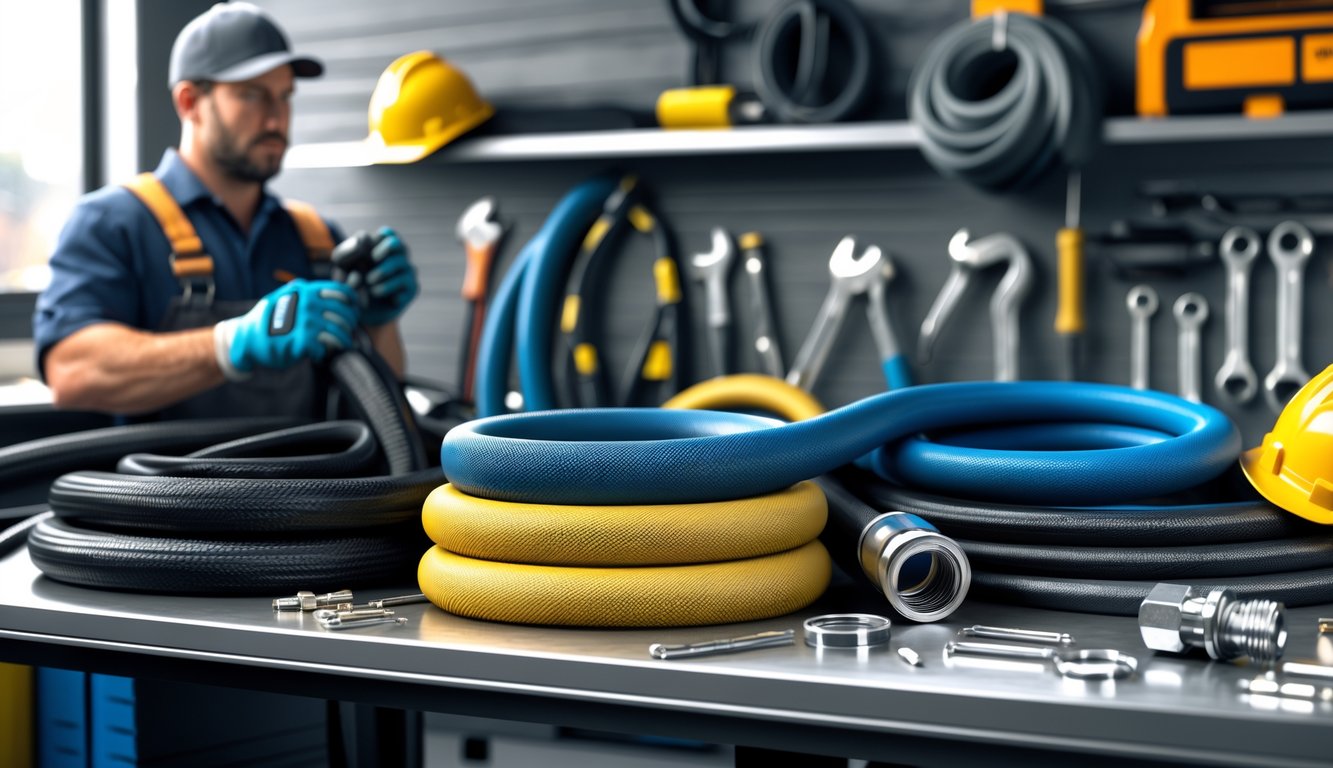
Longevity and Durability Considerations
Honestly, Bluetooth headphones make way more sense to me than hoses that just curl up and kink every time I blink. Contractors—guys who’ll cut copper with a butter knife—complain in group chats that if a hose starts cracking, it’s an entire afternoon wasted on repairs instead of, you know, actual work.
Materials That Prevent Cracking and Leaks
I hate admitting how many “commercial-duty” hoses have just exploded in my hands. Last July, I watched a supposedly high-grade rubber hose survive a week over rebar, while a cheap PVC one cracked after two days. Maybe price does matter, but nobody wants to say it out loud.
What makes everyone twitchy: synthetic rubber is still the gold standard. Industry data backs it up; it shrugs off microtears. You ever squeeze those metal hoses and think, “indestructible,” but in cold weather, the joints split unless the core’s actually built for expansion (double-layer steel, not that single-ply junk). The lifespan of various pipe materials shows copper lasts forever, but that’s pipes, not hoses—rubber hoses outlast vinyl by years, sometimes decades, and I’ve seen polyurethane hoses leak less than most bargain-bin stuff.
Resistance to UV, Kinks, and Abrasion
UV rays. The silent killer. You unroll your hose in May, and half of it’s crunchy. Two landscape techs told me “UV stabilized” hoses are mandatory now—two summers in the sun and basic vinyl is toast. Kink resistance? Supposedly a big deal, but have you ever seen one of those old garden hoses tied in knots and not split?
It’s chaos—some rubber hoses have braided jackets to stop twisting, but “no-kink” claims die the second you drag it around a tree. Metal hoses are supposed to “never abrade,” but their connectors wear out if you twist them too much. Durable hoses can outlive three PVC or polyurethane ones if you keep them off rough concrete. But nobody’s fixed the real problem: hose ends that corrode after one wet winter. If abrasion and UV matter to you, “contractor-grade” rubber usually lasts the longest before you chuck it.
Contractor Tips for Hose Selection and Installation
One hose cracks after a month, another gets dragged down a gravel driveway and it’s fine—why do rubber ones last longer? Do garden hose suppliers know nobody measures their tap size? And how does everyone have a favorite brand except actual plumbers? I tried to figure out the dumbest mistakes that happen every year, but honestly, here’s the stuff nobody tells you in those “pro tips” webinars.
Matching Hose Material to Job Type
Ever seen a contractor use the same hose for solvents and drinking water? That’s how you get fines, ruined paint, gross fittings, job delays. I watched a crew drag generic vinyl tubing across rebar, no clue if it was even compatible with what they were using. Not all hoses can survive real jobsite abuse; some rubber hoses last five times longer than cheap PVC, but nobody advertises how a burst hose wastes two hours and a bunch of expensive adhesive.
People talk nitrile for oils, EPDM for heat, polyurethane for abrasion. I once replaced $6,000 worth of hose because nobody realized “UV resistant” means nothing in the Australian outback. Material data sheets? Bare minimum. Always double-check compatibility tables, especially with corrosive fluids (see hose selection safety guides). It’s always the little things that cause shutdowns. Why do hoses always fail before lunch?
Choosing the Right Hose Diameter
Nobody really calculates pressure drop until there’s a leak—seriously, I’ve watched team leads guess diameters and then complain when the hose whips around or chokes the pressure washer. If your garden hose never hits full spray, odds are you’re using 1/2 inch when your pump needs 3/4. It’s not rocket science, but don’t trust whatever’s on the box. Bottlenecks kill flow, burst fittings, void warranties.
Manufacturers obsess over diameter for a reason. Match the flow tables (or just bookmark installation specs)—ignore it and you’ll be mopping up water while the client side-eyes you. Why did nobody mention small hoses overheat pumps? I’ve seen someone use a steam hose as a garden hose for laughs. It did not survive.